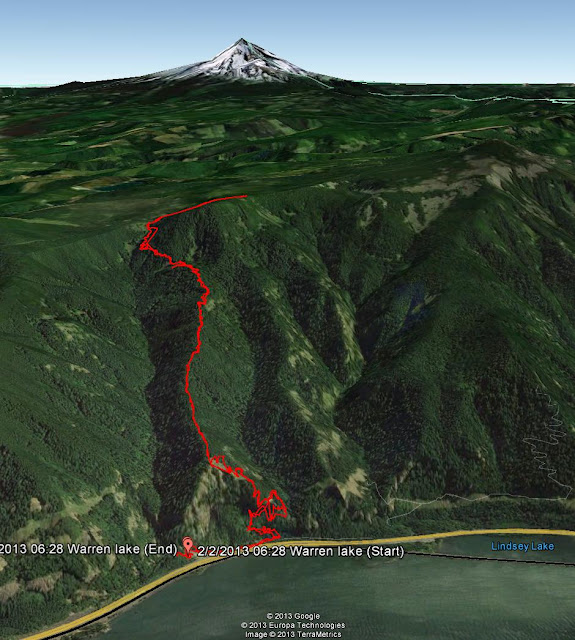
 |
| Pepeçura'nın en son hali |
Bugüne kadar internet sayesinde farklı şehirlerde
(taşınmaktan dolayı) geride bıraktığım bir çok çocukluk arkadaşıma
ulaşabilmiş ve her birinde de farklı heyecanlar yaşamıştım. Geçenlerde çocukluk arkadaşlarını bulmanın heyecanını arattırmayan bir başka olay daha yaşadım. Bu olayın kahramanı ise Karadeniz bölgesi dışında çok da bilinmeyen kara üzümden yapılan Pepeçura muhallebisiydi. İnternette gezerken şans eseri karşıma çıkınca bir anda çocukluk yıllarıma geri döndürdü beni. Çocukken neredeyse her yaz Çengelköy'e Anneannemlere giderdik, hem o hem de etrafdaki diğer Laz akrabaların etkisiyle sanki "Little Arhavi"ye gitmiş gibi olurduk. Etrafımızda bu kadar çok Laz'ın olması sayesinde Laz mutfağından farklı yiyecekleri tadma imkanimiz olurdu (Bunlardan en önemlilerinden olan Kapça Mçkudi yani Hamsili Pilavı burada daha önce anlatmıştım). İşte Pepeçura'yı da arada sırada Anneannem bizler için yapardı. Kendine özgü bordo rengi ile ister istemez Trabzonspor'u (ve doğal uzantısı olarak hamsiyi) hatırlatan bu muhallebinin önce kokusu sonra da tadı insanı kendisine bağlardı. Tabi o zaman çocukluktan ötürü, bu nedir, nasıl yapılır gibi sorularla ilgilenmez, sadece tüketmeye odaklanırdık. Zamanla Anneannem de yapmaz olunca, etrafta baska yapan da olmayinca, yavaş yavaş unuttuk gitti bu muhallebiyi. Ta ki tekrar resmini internette görene kadar. Sanki eski bir çocukluk arkadaşımı daha bulmuş gibi sevindim. Ama ufak bir sorun vardı, sadece resmini görmek yetmiyor, bir kere daha tadına bakmak gerekiyordu. Eşime, çocuklarıma, arkadaşlarıma bakın böyle bir muhteşem bir tad var demek istiyordum.
 Madem Anneannemden binlerce kilometre uzaktaydım, bu muhallebiyi kendim yapmak dışında bir seçeneğim yoktu. Eşimin de yardımıyla internette kısa bir araştırma sonucu çeşitli tariflerine ulaştık. Okuduğumuz tarifleri burada elimizdeki malzemelere göre ayarlayıp yapmaya başladık. Sonuç olarak bence (en azından aklımda kaldığı kadarıyla) hem tad hem de görüntü olarak çok iyi bir sonuç çıkardık. Hem kendi arşivim, hem çocuklarım hem de meraklıları için bizim deneyip iyi sonuç verdiğini düşündüğümüz tarifi burada paylaşmak istiyorum.
Madem Anneannemden binlerce kilometre uzaktaydım, bu muhallebiyi kendim yapmak dışında bir seçeneğim yoktu. Eşimin de yardımıyla internette kısa bir araştırma sonucu çeşitli tariflerine ulaştık. Okuduğumuz tarifleri burada elimizdeki malzemelere göre ayarlayıp yapmaya başladık. Sonuç olarak bence (en azından aklımda kaldığı kadarıyla) hem tad hem de görüntü olarak çok iyi bir sonuç çıkardık. Hem kendi arşivim, hem çocuklarım hem de meraklıları için bizim deneyip iyi sonuç verdiğini düşündüğümüz tarifi burada paylaşmak istiyorum.  Muhallebinin adı Lazca'da Pepeçura olarak geçiyor. Bazı sitelerde kara üzüm hatta Karadeniz üzümü muhallebisi olarak da geçiyor. İsminden de anlaşılacağı gibi malzeme olarak öncelikle kokulu kara üzüm gerekiyor. Türkiye piyasasında Karadeniz üzümü olarak satılıp satılmadığından emin değilim. Burada ise marketlerde sıkça bulunan kırmızı California ya da Şili üzümleri en iyi seçenekler. Biz bu sefer için 3 poundluk (yaklaşık 1.5 kilo) paketlerde satılan California üzümü kullandık. Üzümleri yıkadıktan sonra bir bardak su ile birlikte kaynatmak gerekiyor. İlk kaynamada üzümler üstteki resimde görüldüğü gibi suya renklerini veriyorlar. Daha sonra bu kaynamış üzümleri blender veya mikserden geçirmek lazım. Üzümlerin çekirdeksiz olması bu aşamada önemli. Blender sonrası oluşan karışım yandaki resimdeki gibi görünüyor. Oluşan karışımı ayrıca süzgeçten geçirip posası azaltılabilir. Ama bence posanın kalması hem miktarı artırma açısından hem üzümdeki fiberleri koruma açısından hem de gereksiz israf olmaması açısından daha iyi olacaktır. Bundan sonraki aşama karışımı mısır unu ile karıştırmak. Burada Meksika ürünlerini satan reyonlarda mısır unu bulmak mümkün. Bizde daha önceden alınmış mısır nişastası olduğu için onu kullandık. Yaklaşık 3 yemek kaşığı nişastayı aşağıdaki resimlerdeki gibi koyup karıştırdıktan sonra kaynamasını bekliyoruz. Zaten bu karıştırma işlemi bildiğiniz gibi muhallebi ve çorba gibi yemekler için olmazsa olmaz şartlardan. Kaynama başlar başlamaz ateşten kaldırıp servis kaselerine koyup soğumalarını beklememiz gerekiyor. İsteğe bağlı olarak üzerine hindistan cevizi ve üzüm taneleri koyulabilir. Bir başka sefere sarı üzüm ve burada çok bulunan böğürtlen ve benzeri meyveler (raspberry, blackberry vs) ile de yapmayı planlıyorum.
Muhallebinin adı Lazca'da Pepeçura olarak geçiyor. Bazı sitelerde kara üzüm hatta Karadeniz üzümü muhallebisi olarak da geçiyor. İsminden de anlaşılacağı gibi malzeme olarak öncelikle kokulu kara üzüm gerekiyor. Türkiye piyasasında Karadeniz üzümü olarak satılıp satılmadığından emin değilim. Burada ise marketlerde sıkça bulunan kırmızı California ya da Şili üzümleri en iyi seçenekler. Biz bu sefer için 3 poundluk (yaklaşık 1.5 kilo) paketlerde satılan California üzümü kullandık. Üzümleri yıkadıktan sonra bir bardak su ile birlikte kaynatmak gerekiyor. İlk kaynamada üzümler üstteki resimde görüldüğü gibi suya renklerini veriyorlar. Daha sonra bu kaynamış üzümleri blender veya mikserden geçirmek lazım. Üzümlerin çekirdeksiz olması bu aşamada önemli. Blender sonrası oluşan karışım yandaki resimdeki gibi görünüyor. Oluşan karışımı ayrıca süzgeçten geçirip posası azaltılabilir. Ama bence posanın kalması hem miktarı artırma açısından hem üzümdeki fiberleri koruma açısından hem de gereksiz israf olmaması açısından daha iyi olacaktır. Bundan sonraki aşama karışımı mısır unu ile karıştırmak. Burada Meksika ürünlerini satan reyonlarda mısır unu bulmak mümkün. Bizde daha önceden alınmış mısır nişastası olduğu için onu kullandık. Yaklaşık 3 yemek kaşığı nişastayı aşağıdaki resimlerdeki gibi koyup karıştırdıktan sonra kaynamasını bekliyoruz. Zaten bu karıştırma işlemi bildiğiniz gibi muhallebi ve çorba gibi yemekler için olmazsa olmaz şartlardan. Kaynama başlar başlamaz ateşten kaldırıp servis kaselerine koyup soğumalarını beklememiz gerekiyor. İsteğe bağlı olarak üzerine hindistan cevizi ve üzüm taneleri koyulabilir. Bir başka sefere sarı üzüm ve burada çok bulunan böğürtlen ve benzeri meyveler (raspberry, blackberry vs) ile de yapmayı planlıyorum.
|
|
|
Kaynaklar:












































